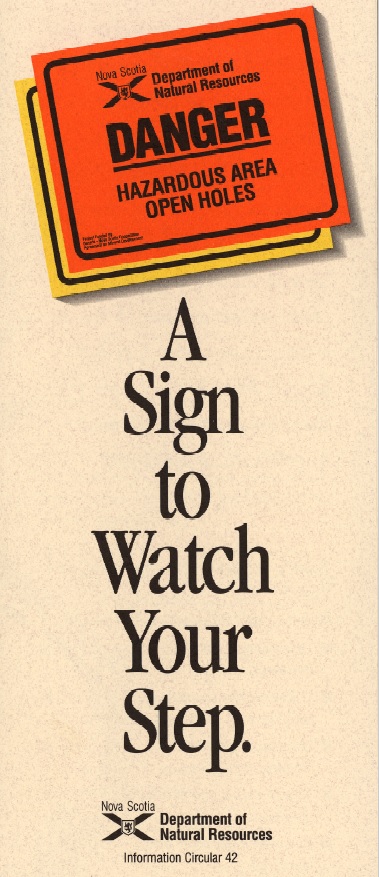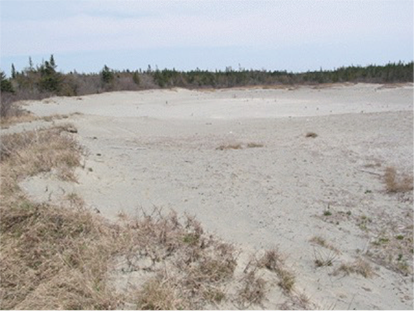
Abandoned Mines

Many abandoned mine sites contain unsecured open holes and tunnels which present hazards to the public. At some mines, signs on Crown and private land identify the locations of open holes and hazards; however, many more of these abandoned mine openings have no warning signs posted. Anyone who may be traveling in an undeveloped area known to potentially contain abandoned mine openings should review the Nova Scotia Department of Natural Resources Information Circular ME 42, 1995 - A Sign to Watch Your Step.
The Department of Natural Resources and Renewables (NRR) have an Abandoned Mine Openings (AMO) Remediation Program to address AMO’s on Crown land. The program is managed jointly by the Regional Services and Geoscience and Mines Branches at NRR. It is overseen by the Executive Directors of the two Branches and the Land Services Branch at NRR.
The AMO Remediation Program is a long-term project, and approximately $50,000 worth of work is completed each year. A listing of AMO areas on Crown land has been prioritized and the work plan for each year is determined primarily based on the priority listing. Other factors are also considered, such as newly discovered hazardous openings or where previously remediated, high-priority openings, require additional attention.
There are 8,549 documented AMO’s in the province spread across approximately 220 mining areas, hosting more than 700 individual mine sites. Each area may host anywhere from a single AMO up to 440 mine openings (e.g. Oldham & Goldenville). AMO hazards range from extremely dangerous to no significant hazard. Most of the AMO’s in the province (including those on private land) have been assigned a hazard rating, ranging from Type I (inescapable) to Type IV (no significant hazard).
The AMO Remediation Program began in 2001, and since that time approximately 1000 AMOs on Crown land have been remediated. This number does not include 140 AMO’s excavated and or backfilled as part of surface coal or gold mining operations on Crown land. Similar work on Private land has eliminated any hazard posed by approximately 300 mine openings.
The Department of Public Works (DPW) has played a significant role in the AMO Remediation Program, both in conducting work with its own crews, and in tendering and managing contracted work. In the past 22 years DPW has backfilled more than 300 AMO’s, capped four mine openings at Caribou Mines and New Ross, and assisted NRR staff in the placement of a grate to protect a bat habitat at Lake Charlotte. Besides the work conducted by DPW at Lake Charlotte, grates to provide access for bats have also been put in place at Glenelg, Londonderry and Bass River of Five Islands.
One of the main objectives of the AMO Remediation Program was to remediate all the Type I AMO’s on Crown land, and this was accomplished by the end of 2011. Thirty private contractors, as well as crews from regional offices of DPW have participated in the program.
The mandate of the Abandoned Mine Openings Remediation Program is to address hazards to public safety posed by mine openings on Crown lands. The program is not intended to address reclamation or potential environmental impacts associated with former mine sites. Work of that type, on Crown land, is conducted by Build Nova Scotia, a Provincial Crown Corporation, see Historic Mine Remediation | Build Nova Scotia | Build Nova Scotia (buildns.ca).
The Geoscience and Mines Branch conducts field programs to inspect almost all AMO’s on Crown land on a regular basis. The degree of hazard is re-assessed, warning signs and flagging are upgraded as needed and the field inspections are used to update both the AMO Database and the AMO remediation priority list.

